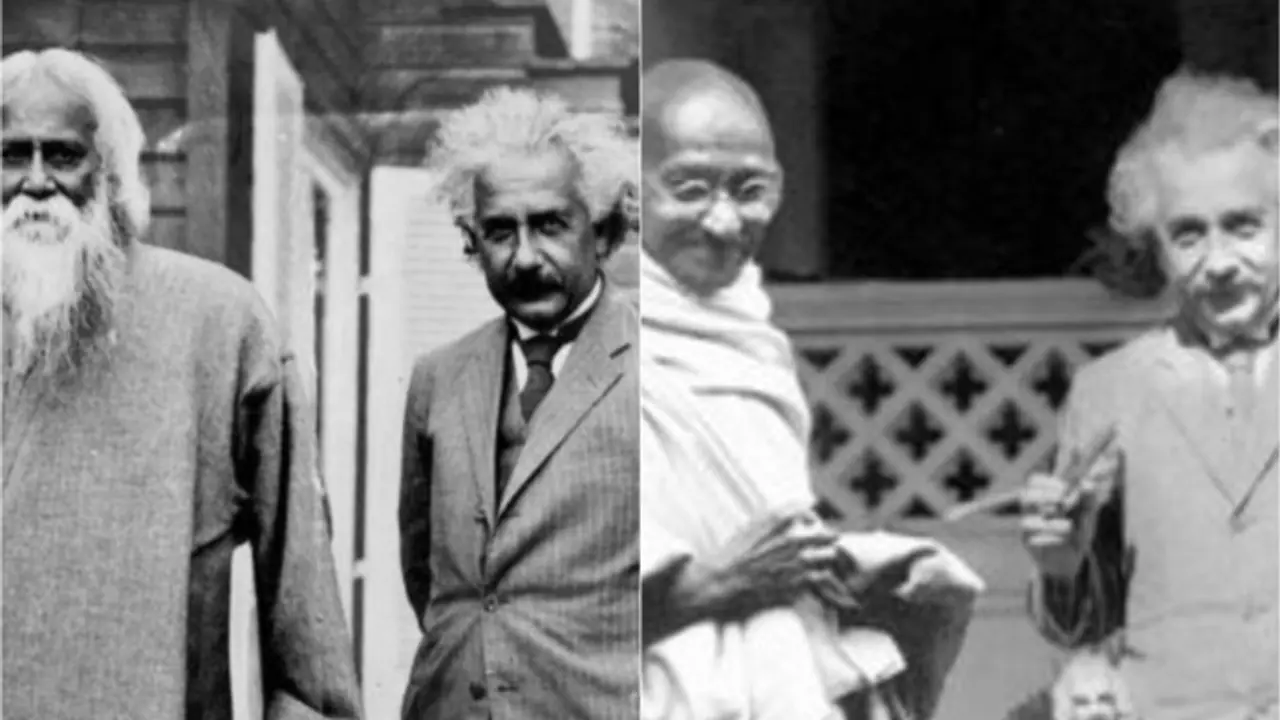Albert Einstein's interactions with Mahatma Gandhi and Rabindranath Tagore reveal a deep respect for India's spiritual and philosophical traditions, highlighting a unique blend of science, nonviolence, and humanistic thought that transcends time.
In the early 20th century, as the world grappled with wars and revolutions, two of its greatest minds—Albert Einstein and Mahatma Gandhi—found common ground in their pursuit of peace and truth. Their correspondence and mutual admiration underscore a profound connection between science and spirituality, reason and conscience.

In 1931, Einstein penned a heartfelt letter to Gandhi, expressing deep respect for his nonviolent resistance against British colonial rule. He wrote:
“You have shown through your works, that it is possible to succeed without violence even with those who have not discarded the method of violence. We may hope that your example will spread beyond the borders of your country, and will help to establish an international authority, respected by all, that will take decisions and replace war conflicts.”
Gandhi, then in London for the Round Table Conference, responded warmly:
“I was delighted to have your beautiful letter sent through Sundaram. It is a great consolation to me that the work I am doing finds favour in your sight. I do indeed wish that we could meet face to face and that too in India at my Ashram.”
Though they never met, Einstein continued to admire Gandhi's principles. In a 1950 radio address, he remarked:
“I believe that Gandhi’s views were the most enlightened of all the political men of our time. We should strive to do things in his spirit: not to use violence in fighting for our cause, but by non-participation in anything you believe is evil.”
Albert Einstein and Rabindranath Tagore
A year before this exchange, Einstein hosted another Indian luminary, Rabindranath Tagore, at his Berlin residence.
One of the most profound intellectual exchanges of the 20th century occurred between Albert Einstein and Rabindranath Tagore—two Nobel laureates from vastly different fields.
Their first meeting took place at Einstein’s Berlin residence on July 14, 1930, and became the foundation of a unique cross-cultural dialogue on science, philosophy, and the nature of reality.
In a now-famous conversation titled “The Nature of Reality,” Einstein, the rational physicist, and Tagore, the spiritual philosopher-poet, explored whether truth was independent of the human mind or shaped by human consciousness.
Einstein believed in an objective reality that existed whether humans perceived it or not, while Tagore argued that reality was inherently tied to human experience.
Despite their differing worldviews, the conversation was marked by mutual respect and deep curiosity. The two went on to meet again twice, exchanging letters as well. Their dialogue remains a rare example of science and spirituality engaging on equal terms.
Their July 14, 1930, meeting delved into the nature of reality, blending science and philosophy. Tagore posited that truth is inherently human, shaped by our consciousness:
“The world is a human world — the scientific view of it is also that of the scientific man. Therefore, the world apart from us does not exist; it is a relative world, depending for its reality upon our consciousness.”
Einstein countered with his belief in an objective reality independent of human perception. Their dialogue, published in the Modern Review in January 1931, showcased a respectful exchange between differing worldviews.
These interactions highlight a unique confluence of Eastern and Western thought. Einstein's engagements with Gandhi and Tagore reflect his appreciation for India's philosophical depth and moral clarity. Their shared ideals continue to inspire global dialogues on peace, ethics, and the human condition.


